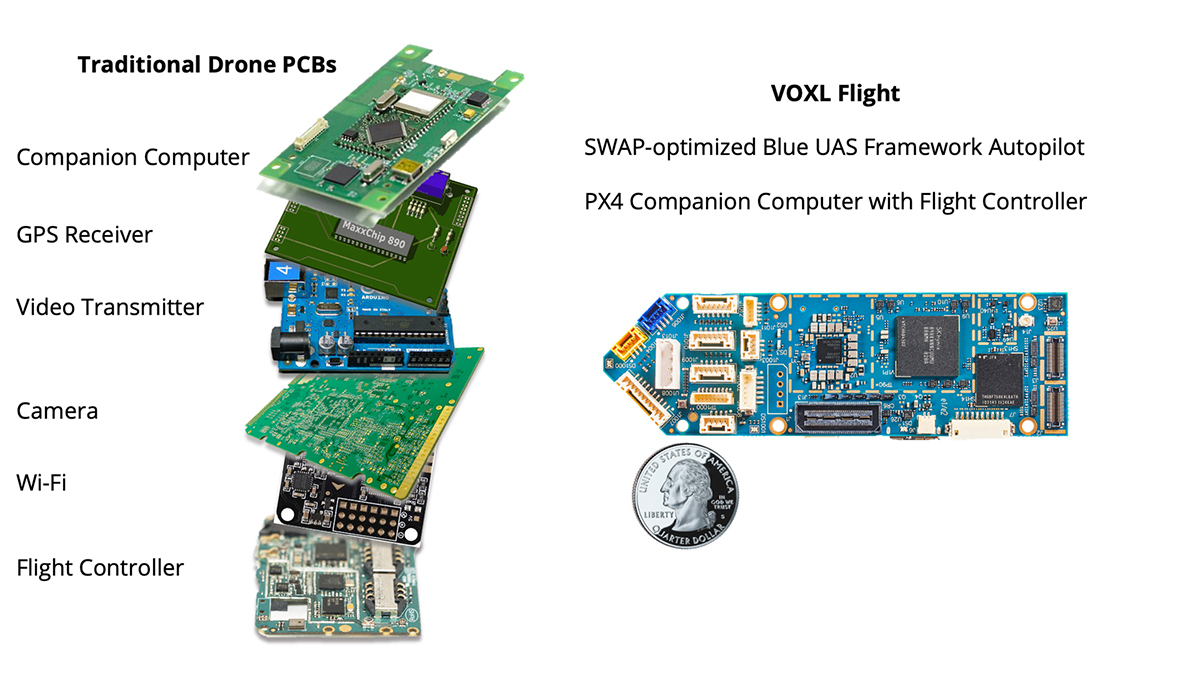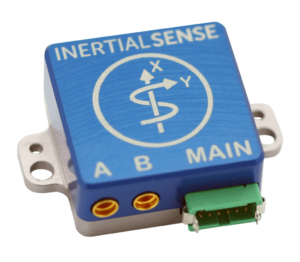Unrivaled Precision: SparkNavi Drone Flight Controller and GNSS/INS Made in Taiwan
Unrivaled Precision: SparkNavi Drone Flight Controller and GNSS/INS Made in Taiwan
Blog Article
Exploring the Duty of Drone Flight Controllers in Enhancing Trip Security and Navigation Effectiveness
The development of drone innovation has actually substantially boosted the relevance of trip controllers, which serve as the brain of these airborne cars. By integrating real-time information from a range of sensors, trip controllers boost flight stability and navigating efficiency, making sure that drones can run smoothly even in intricate environments. This discussion will certainly discover the vital parts that add to these enhancements, along with the implications for the future of autonomous trip. What innovations lie ahead that could additionally change the capabilities of drone trip controllers?

Comprehending Flight Controllers
Trip controllers are essential parts in the functioning of drones, working as the brains that maintain and manage trip procedures. These innovative tools procedure information from various sensing units, consisting of accelerometers, gyroscopes, and GPS, to guarantee that the drone preserves its desired trip course. The trip controller interprets this information and performs commands based upon pre-defined formulas, enabling the drone to react to environmental modifications, such as wind or obstacles.
The primary feature of a trip controller is to preserve security throughout flight. It accomplishes this by making real-time modifications to the drone's motors and control surface areas, guaranteeing equilibrium and control. Additionally, modern trip controllers integrate sophisticated features such as waypoint navigation, enabling for automated flight paths and enhanced functional performance.
Comprehending the style of flight controllers is important for both professionals and hobbyists. They generally include a microcontroller, firmware, and numerous user interfaces for sensing unit input and communication. As technology advances, flight controllers have actually come to be extra small and capable, integrating man-made intelligence to improve decision-making procedures and adapt to complicated trip situations. This development indicates a critical advancement in the drone industry, paving the method for extra sophisticated applications and much safer procedures.
Key Components of Flight Security
Accomplishing ideal flight security in drones relies upon several key components that work in concert to ensure regulated and smooth operations. Central to this stability is the flight controller itself, which processes information from various sensors to preserve the desired trip mindset. This includes accelerometers and gyroscopes that measure motion and positioning, permitting real-time modifications to the drone's position.
Another vital element is the digital rate controllers (ESCs), which manage the power provided to the electric motors. By carefully adjusting electric motor speeds in feedback to trip controller commands, ESCs assist keep equilibrium and counteract disruptions triggered by wind or sudden activities.
Furthermore, the layout of the drone's frame plays a critical function in trip security. A well-structured frame minimizes vibrations and enhances the total wind resistant profile, adding to smoother flight characteristics. Finally, the integration of advanced formulas within the trip controller aids in anticipating modifications, guaranteeing a receptive and adaptable trip experience.
Together, these components develop a natural system that improves a drone's stability, enabling for specific maneuvering and enhanced efficiency in various trip conditions.
Navigating Performance Techniques
Effectiveness in navigating is vital for maximizing drone procedures, especially in complicated atmospheres. Effective navigating techniques improve the capacity of drones to traverse tough terrains and avoid obstacles, therefore improving functional effectiveness and safety.
One noticeable technique is the application of sophisticated GPS and inertial measurement units (IMUs) that supply accurate location monitoring and orientation data. These modern technologies enable drones to compute optimal flight courses in real-time, taking into consideration numerous aspects such as wind conditions and potential challenges.
Another method entails using algorithms for course planning and optimization. Algorithms such as A * and Dijkstra's algorithm can be released to identify the most reliable route while reducing energy consumption and flight time. Moreover, incorporating machine discovering versions can make it possible for drones to adaptively discover from their settings, enhancing navigating capacities via experience.

Influence on Autonomous Drones
The assimilation of advanced navigating methods has actually profoundly changed the abilities of self-governing drones, allowing them to operate with better freedom and accuracy. SparkNavi drone flight controller and GNSS/INS made in taiwan. These enhancements are mostly associated to sophisticated flight controllers that make use of real-time data handling and sensing unit combination, permitting drones to navigate intricate atmospheres effortlessly
The influence on independent drones extends past simple navigating; it encompasses improved challenge avoidance, improved stability throughout dynamic problems, and boosted mission reliability. By leveraging formulas that Check Out Your URL incorporate equipment discovering and fabricated knowledge, drones can adapt to transforming situations, making informed choices that optimize their flight courses while lessening risks.
In addition, the execution of robust flight controllers has actually promoted the execution of intricate tasks, such as aerial evaluations, delivery services, and agricultural surveillance, with minimal human intervention. This ability not only improves procedures but likewise minimizes human mistake, consequently enhancing general security.
Therefore, the functional scope of autonomous drones has increased considerably, making them essential devices in various markets. Their capacity to execute efficiently in varied scenarios highlights the essential function that progressed flight controllers play in shaping the future of unmanned airborne systems.
Future Fads in Flight Control
Often, advancements in trip control technology are poised to redefine the landscape of drone procedures in the coming years. Arising fads show a substantial change in the direction of boosted expert system (AI) integration, allowing flight controllers to process real-time data extra efficiently. This development will certainly help with better decision-making capacities, enabling drones to adapt to vibrant ecological problems autonomously.
Moreover, the application of artificial intelligence algorithms is expected to enhance predictive upkeep, thereby lessening downtime and expanding the explanation lifecycle of drone parts. This proactive strategy to upkeep will certainly be crucial as drone applications expand across different markets, from agriculture to logistics.

.jpg)
Lastly, innovations in safe interaction methods will address security and governing concerns, guaranteeing that drones can run perfectly in overloaded airspaces (SparkNavi drone flight controller and GNSS/INS made in taiwan). Jointly, these patterns aim in the direction of a future where trip control systems are not just smarter and extra likewise capable yet effective of operating safely in a significantly integrated airspace
Verdict
Finally, drone trip controllers are indispensable to enhancing flight security and navigating effectiveness with the sophisticated processing of sensor data. By maintaining optimum flight mindsets and utilizing innovative algorithms for path optimization and challenge avoidance, these controllers dramatically contribute to the autonomy and functional safety of drones. As technology continues to progress, further innovations in flight control systems are anticipated, guaranteeing better efficiency and broadened abilities in the world of unmanned airborne automobiles.
By incorporating real-time information from a selection of sensing units, trip controllers enhance trip stability and navigation effectiveness, guaranteeing that drones can operate efficiently also in complicated environments.Trip controllers are integral elements in the functioning of drones, serving as the minds that stabilize and manage flight operations. Additionally, modern-day trip controllers integrate advanced attributes such as waypoint navigation, permitting for automated trip courses and improved functional performance.
Central to this security is the flight controller itself, which processes data from different sensing units to maintain the wanted trip perspective.In conclusion, drone trip controllers are indispensable to improving trip security and navigation effectiveness through the sophisticated processing of sensing unit information.
Report this page